This week all our students are hard at work examining the objects they are using for their research projects. For the younger students these are objects that will be used to generate a Class Museum. For the older students, the objects of study relate to their chosen topic in Australian History.
Foundation / Prep / Kindy to Year 3
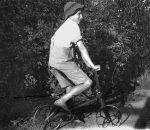 Students in Foundation/Prep/Kindy (Unit F.3) are examining items from the past and completing their Scientific Report by drawing these items in the Method section of the report. We also ask students to analyse their Data by drawing a picture of how people would have used that item in the past. Students in combined Foundation/Prep/Kindy and Year 1 classes (Unit F-1.3), as well as students in Year 1 (Unit 1.3), 2 (Unit 2.3) and 3 (Unit 3.3) are also addressing the Method, Data and Analysis sections of their report by listing, describing and drawing the sources and information which the teacher has helped them to locate. The sources should include items which can be used to make a Class Museum, as well as old photographs, paintings, books, newspapers etc. Teachers can guide class discussions around how items were used in the past – which are familiar, and which are not and compare with the stories read in the first weeks of term.
Students in Foundation/Prep/Kindy (Unit F.3) are examining items from the past and completing their Scientific Report by drawing these items in the Method section of the report. We also ask students to analyse their Data by drawing a picture of how people would have used that item in the past. Students in combined Foundation/Prep/Kindy and Year 1 classes (Unit F-1.3), as well as students in Year 1 (Unit 1.3), 2 (Unit 2.3) and 3 (Unit 3.3) are also addressing the Method, Data and Analysis sections of their report by listing, describing and drawing the sources and information which the teacher has helped them to locate. The sources should include items which can be used to make a Class Museum, as well as old photographs, paintings, books, newspapers etc. Teachers can guide class discussions around how items were used in the past – which are familiar, and which are not and compare with the stories read in the first weeks of term.
Years 3 to 6
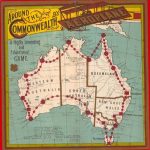 Older students are expected to analyse their Data in increasing detail relevant to their year-level, as well as listing sources in the Method section of their Scientific Reports. Students in Year 4 (Unit 4.3) are researching a topic from Australia at the time of contact with Europeans, which includes topics in Aboriginal and early colonial history. Students should consider each source and what information they can get from the source. In addition students should think about how objects, pictures and texts were used in the past and what inherent biases might be present. Students in Year 5 (Unit 5.3) are researching a topic from Australian colonial history. Teachers should guide students through the process of determining whether they are dealing with a primary or secondary source, as well as how to use that source to learn more about the past. Inherent bias in different sources should be discussed. Students in Year 6 (Unit 6.3) are researching a topic surrounding Federation and events in Australia in the early 20th century. Many of the sources available contain both primary and secondary information and students should be starting to develop an understanding of how to use, analyse and reference these sources. In preparation for the requirements of high school, teachers should guide these students through the process of building an interpretation of their analysis which is substantiated through reference to their sources (listed in the Bibliography of their report). Students should be able to show where they got their information and how they are interpreting that information. For students in Year 6, the Student Workbook is more of a guide for writing a complete Scientific Report, which they are expected to compile more or less independently.
Older students are expected to analyse their Data in increasing detail relevant to their year-level, as well as listing sources in the Method section of their Scientific Reports. Students in Year 4 (Unit 4.3) are researching a topic from Australia at the time of contact with Europeans, which includes topics in Aboriginal and early colonial history. Students should consider each source and what information they can get from the source. In addition students should think about how objects, pictures and texts were used in the past and what inherent biases might be present. Students in Year 5 (Unit 5.3) are researching a topic from Australian colonial history. Teachers should guide students through the process of determining whether they are dealing with a primary or secondary source, as well as how to use that source to learn more about the past. Inherent bias in different sources should be discussed. Students in Year 6 (Unit 6.3) are researching a topic surrounding Federation and events in Australia in the early 20th century. Many of the sources available contain both primary and secondary information and students should be starting to develop an understanding of how to use, analyse and reference these sources. In preparation for the requirements of high school, teachers should guide these students through the process of building an interpretation of their analysis which is substantiated through reference to their sources (listed in the Bibliography of their report). Students should be able to show where they got their information and how they are interpreting that information. For students in Year 6, the Student Workbook is more of a guide for writing a complete Scientific Report, which they are expected to compile more or less independently.


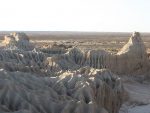
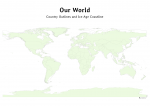 Foundation to Year 3
Foundation to Year 3
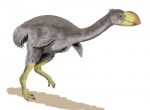
 Our youngest students are still finding their feet in the new big world of school! We have 2 units for Term 1, depending on whether the class is standalone, or integrating with some Year 1 students. This week standalone classes will be starting a discussion about their families – geared towards making our newest students feel welcome and comfortable at school.
Our youngest students are still finding their feet in the new big world of school! We have 2 units for Term 1, depending on whether the class is standalone, or integrating with some Year 1 students. This week standalone classes will be starting a discussion about their families – geared towards making our newest students feel welcome and comfortable at school. Some Year 3 students may be in classes integrating with Year 4 students, rather than Year 2. Standalone Year 3 classes have a choice of doing either unit. These older students will be undertaking the Timeline Activity and getting a physical sense of history and spans of time. Students love an excuse to get outdoors, even when it’s hot, and this activity gives them a preview of material they will be covering later in the year, as well as giving them a hands-on understanding of how time has passed and how where we are compares to past events. This activity can even reinforce the concept of a number line from Maths, in a very kinaesthetic way.
Some Year 3 students may be in classes integrating with Year 4 students, rather than Year 2. Standalone Year 3 classes have a choice of doing either unit. These older students will be undertaking the Timeline Activity and getting a physical sense of history and spans of time. Students love an excuse to get outdoors, even when it’s hot, and this activity gives them a preview of material they will be covering later in the year, as well as giving them a hands-on understanding of how time has passed and how where we are compares to past events. This activity can even reinforce the concept of a number line from Maths, in a very kinaesthetic way.
My 9 year old son fell in love with all the aspects of this little robotic guy - the simple…
Cara, Parent